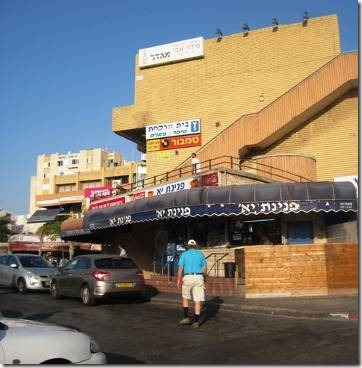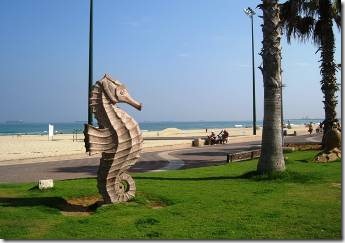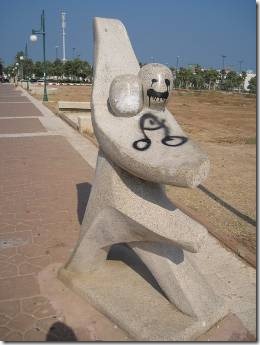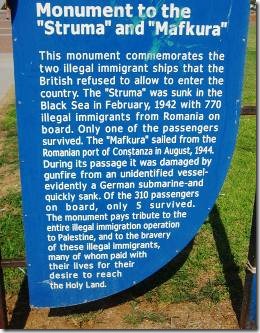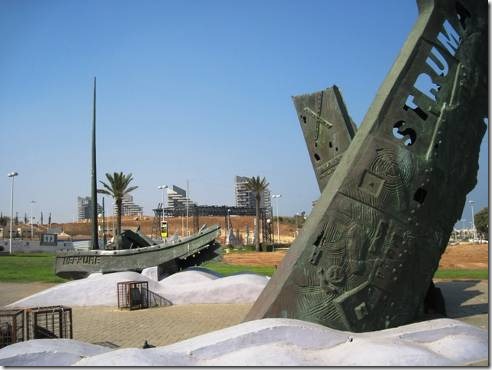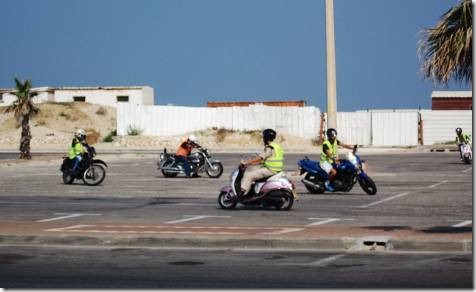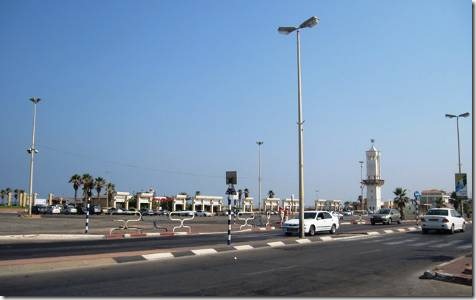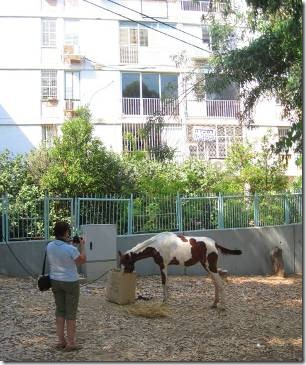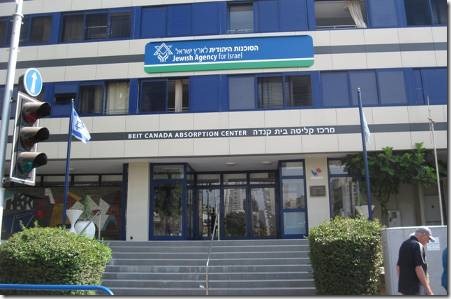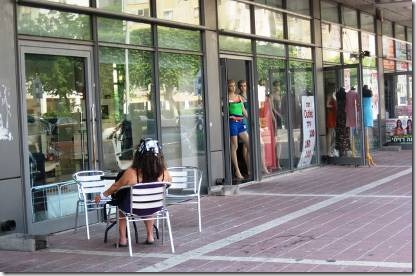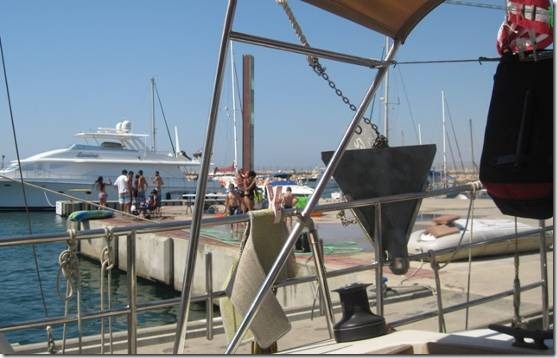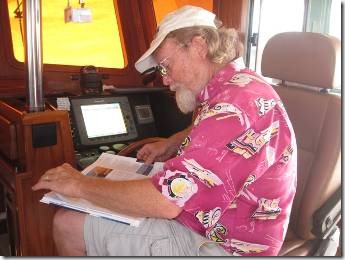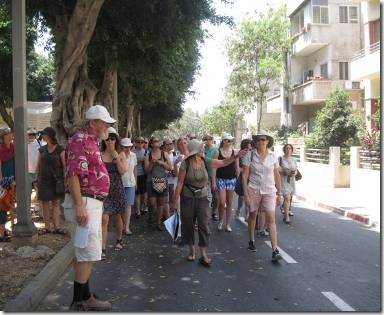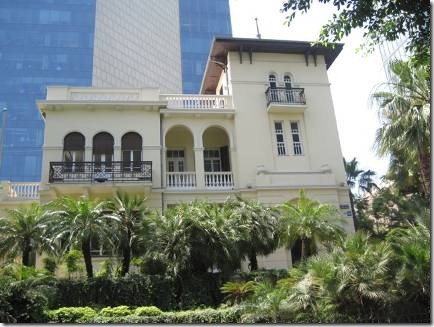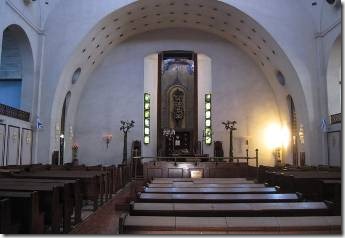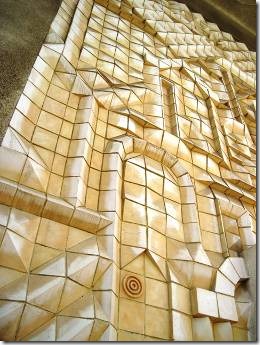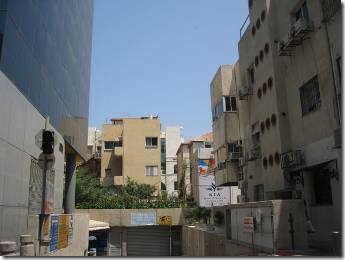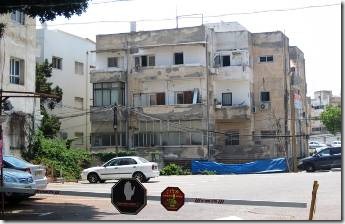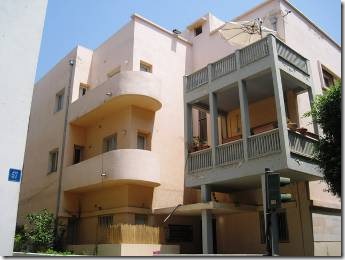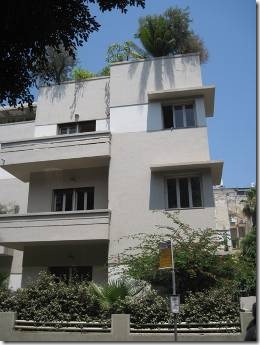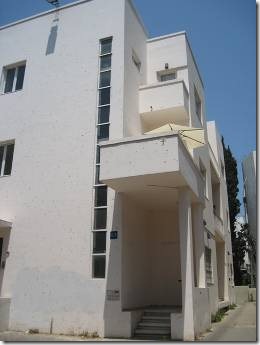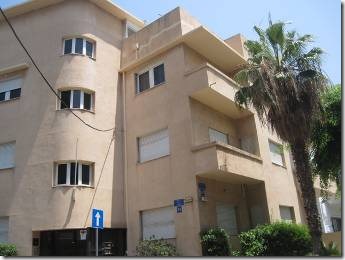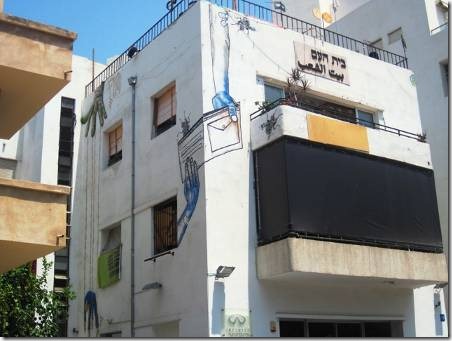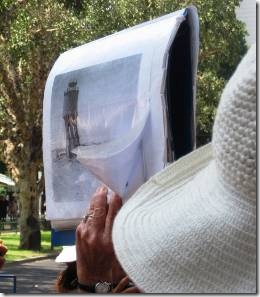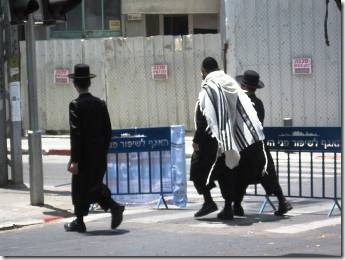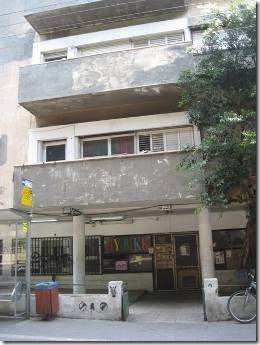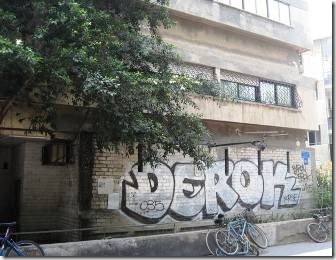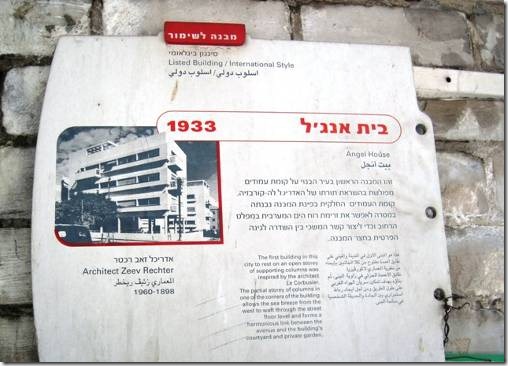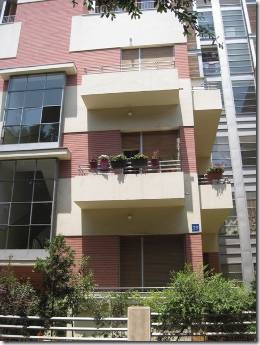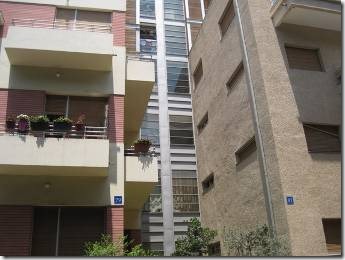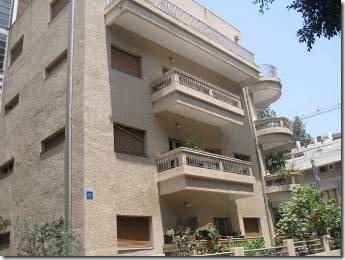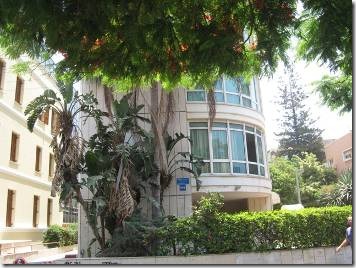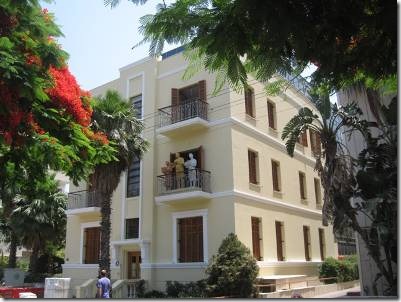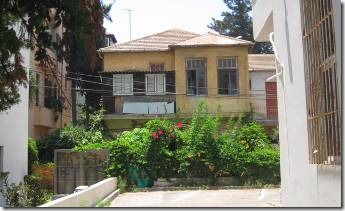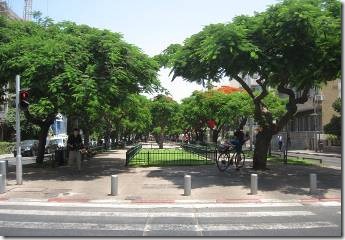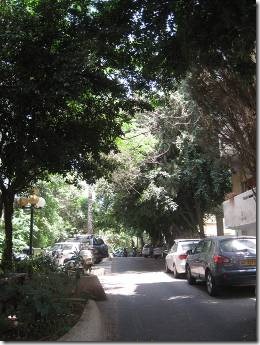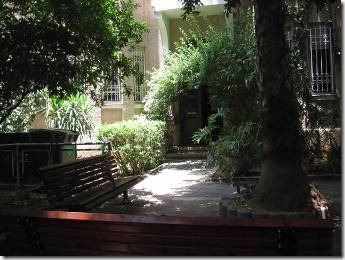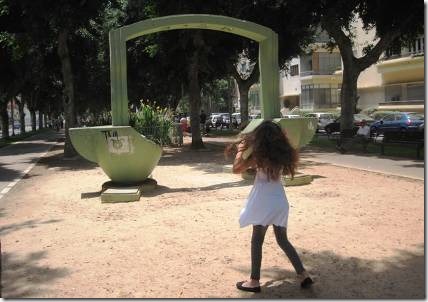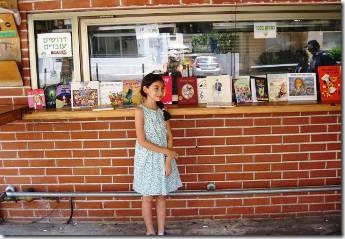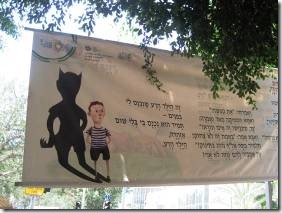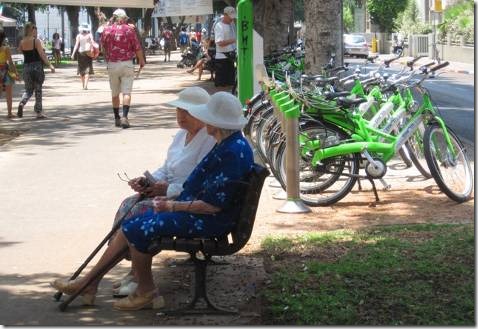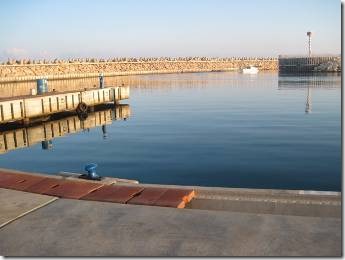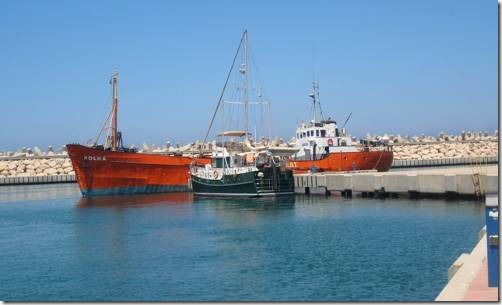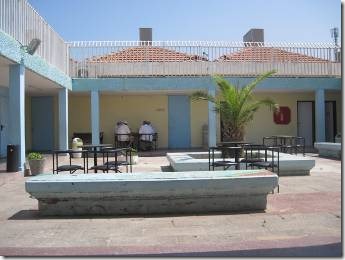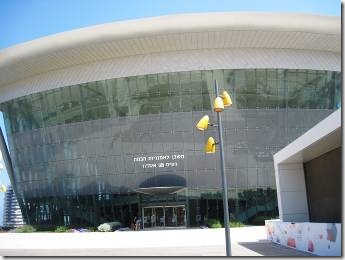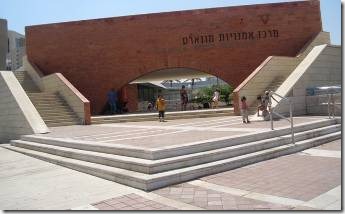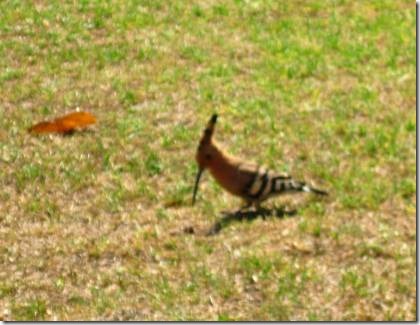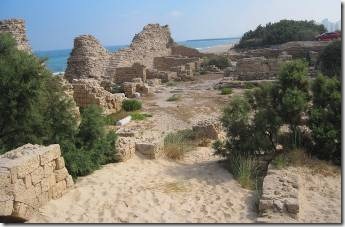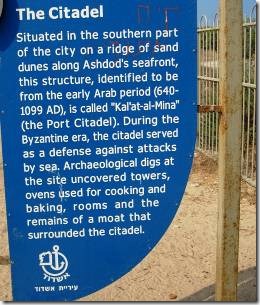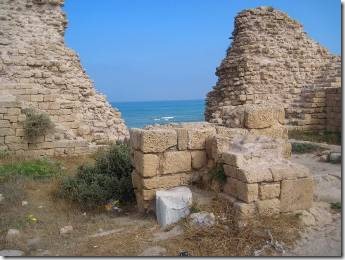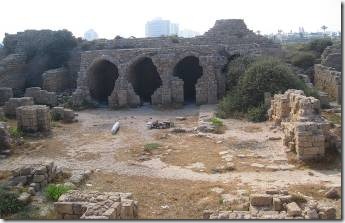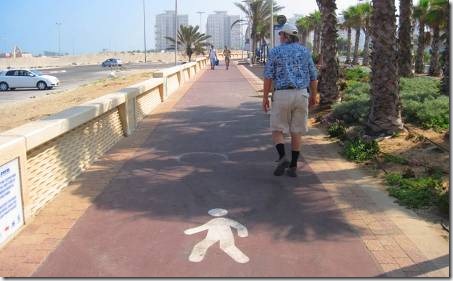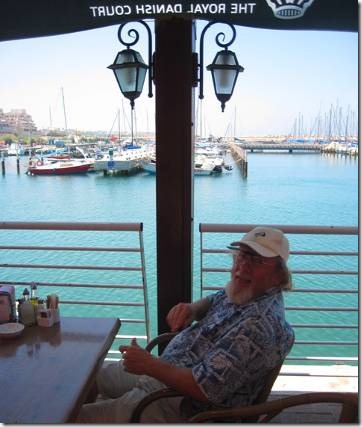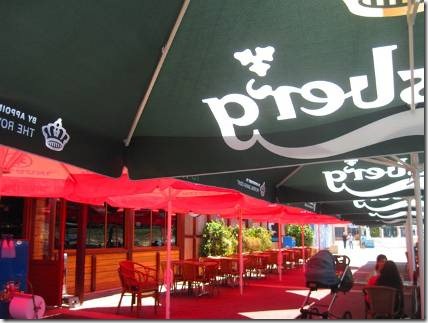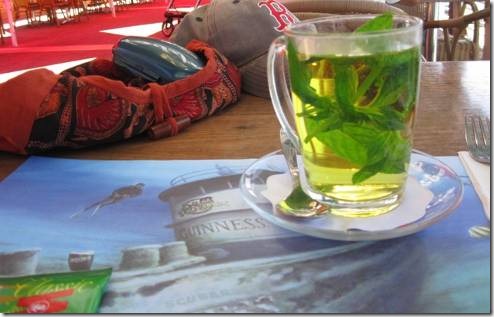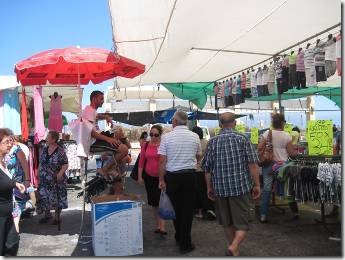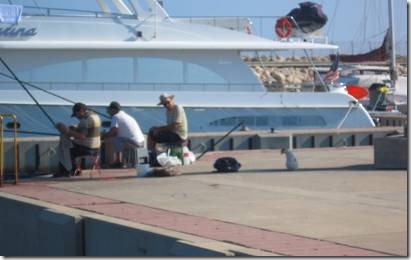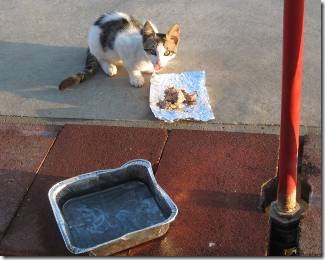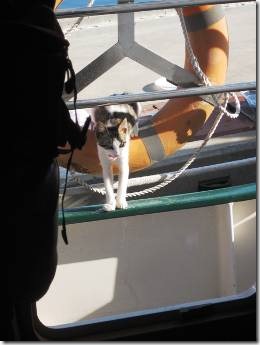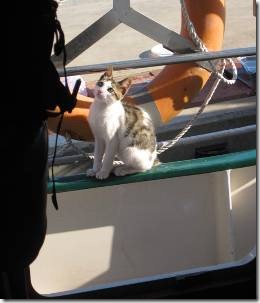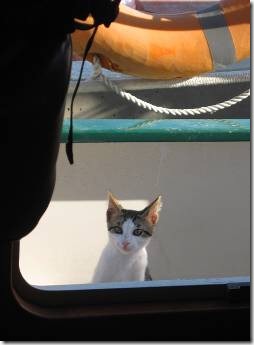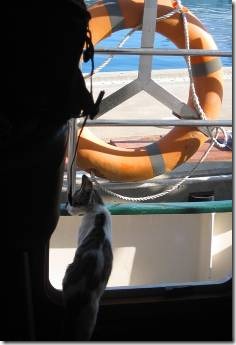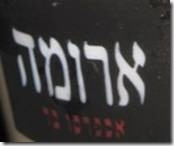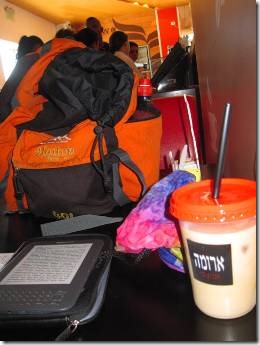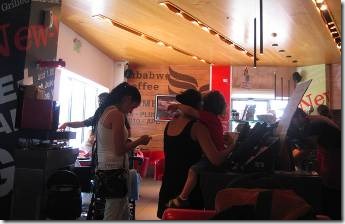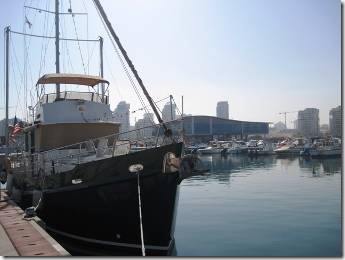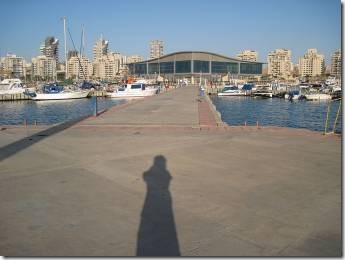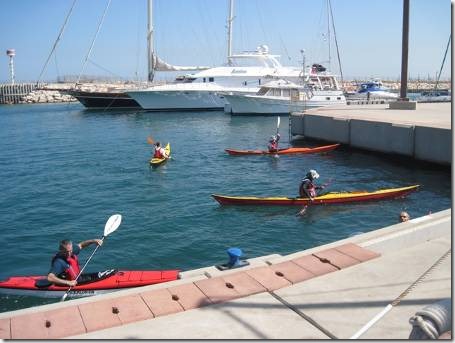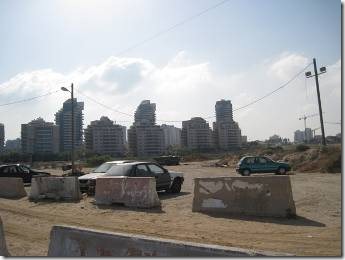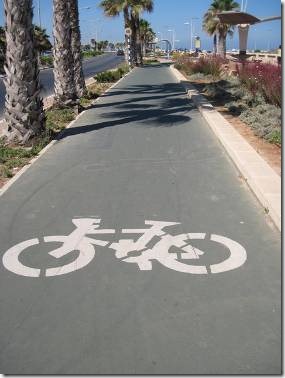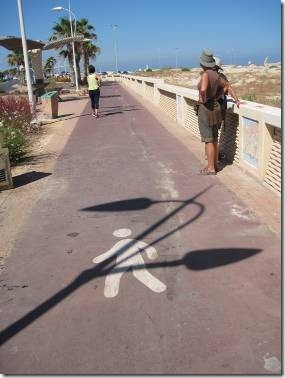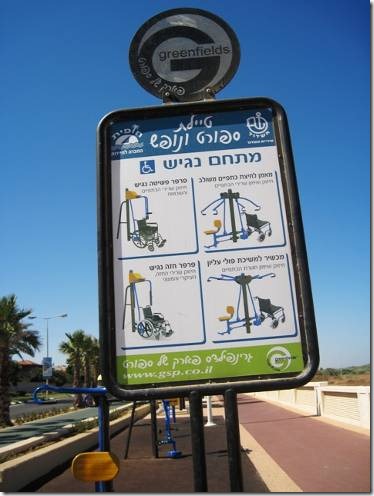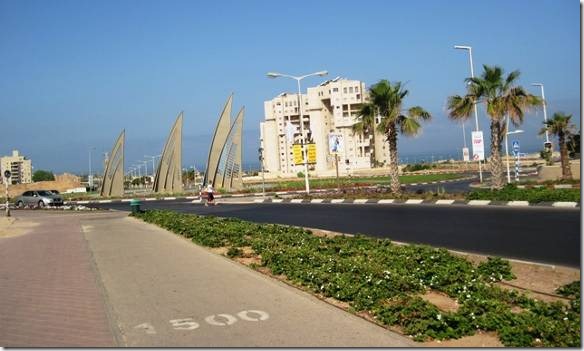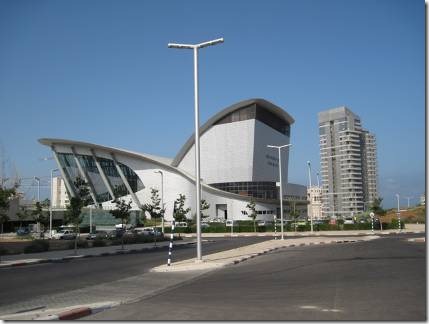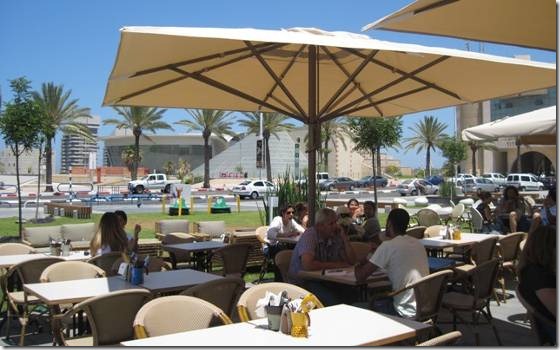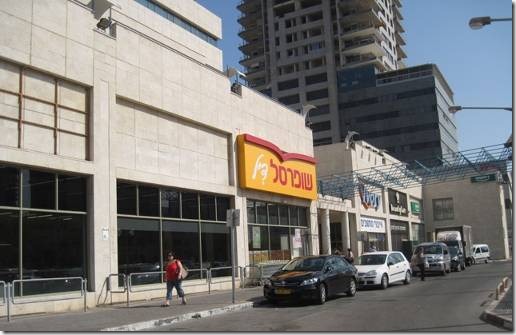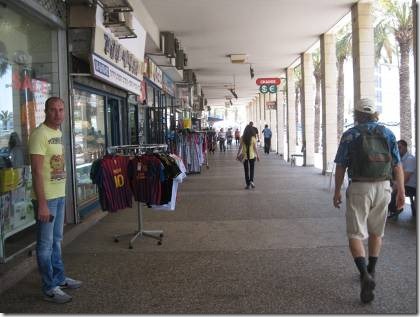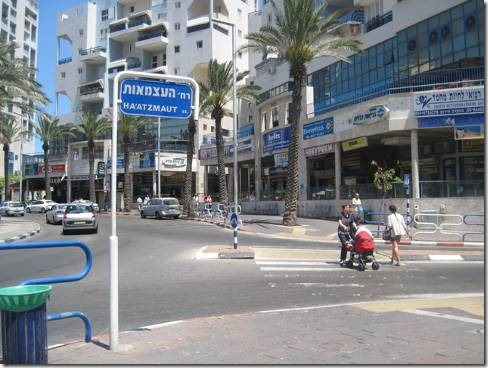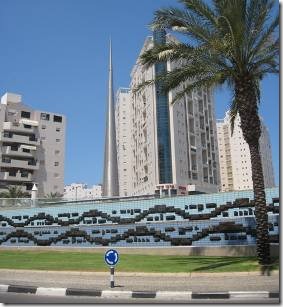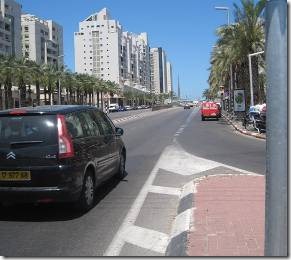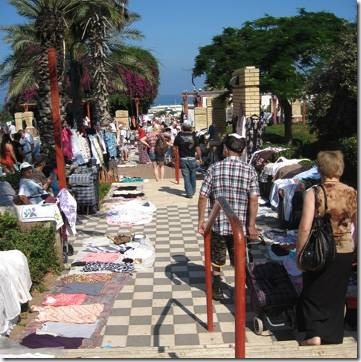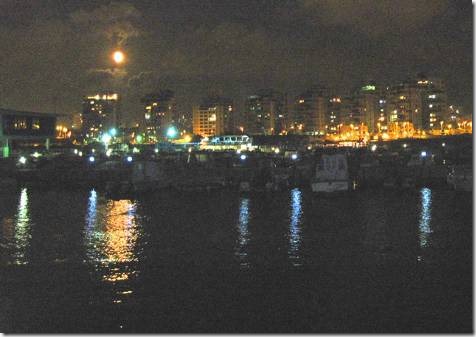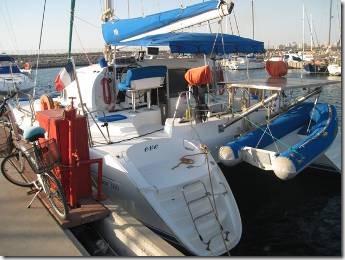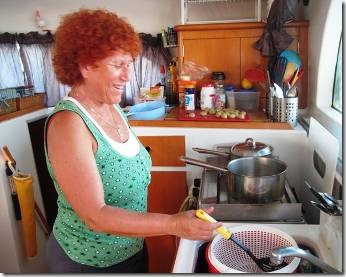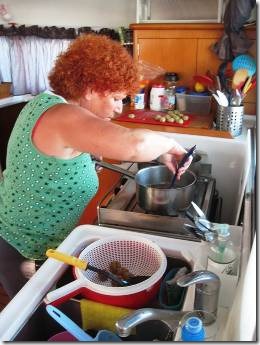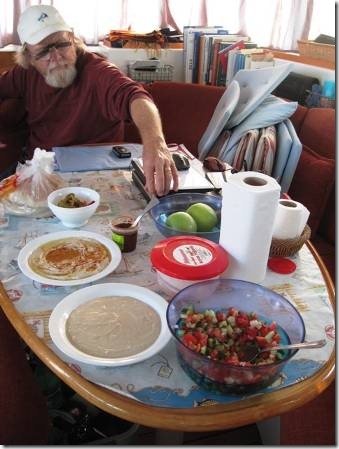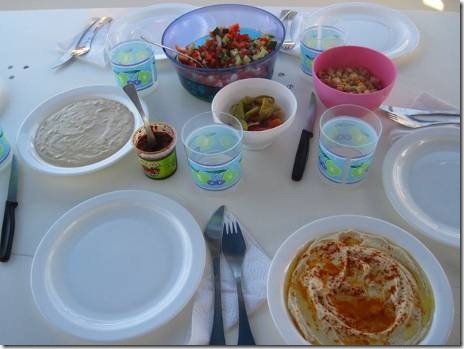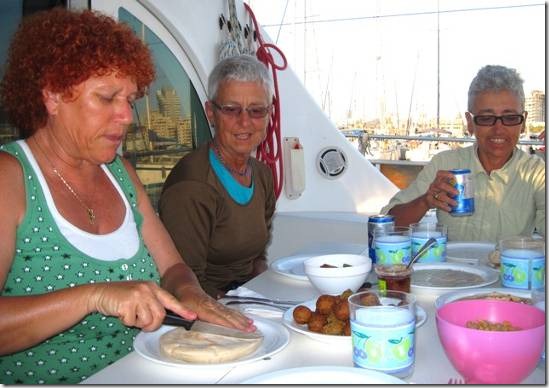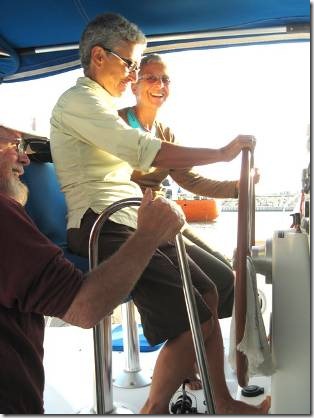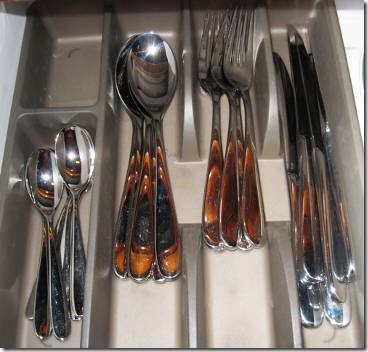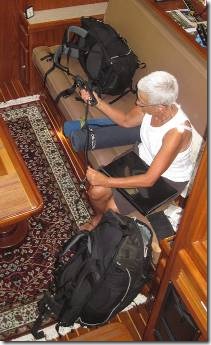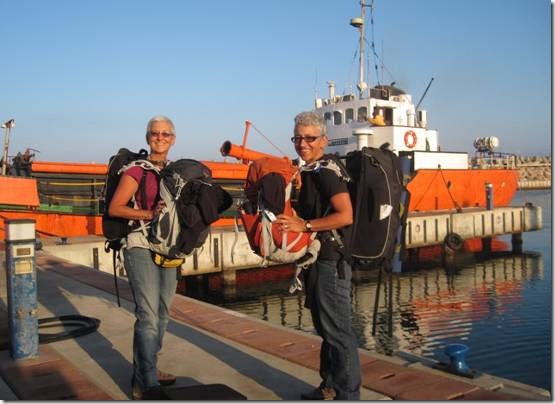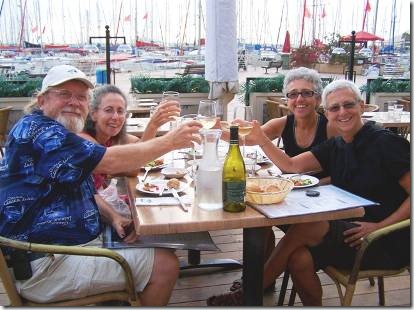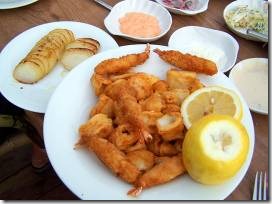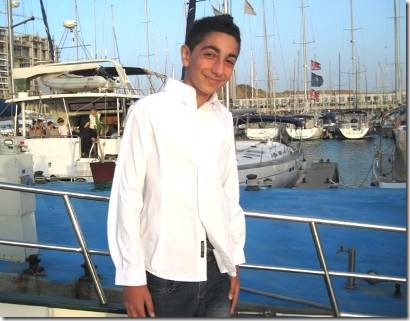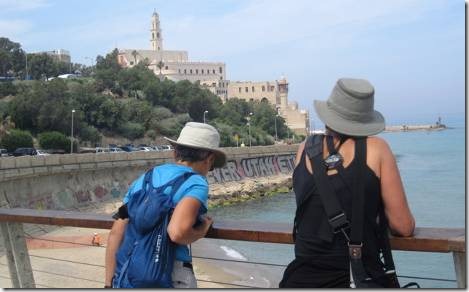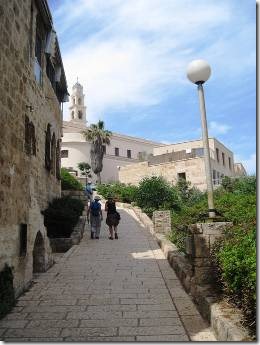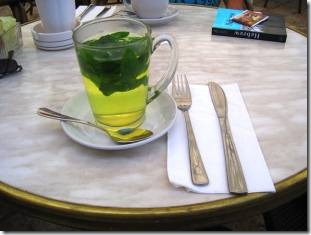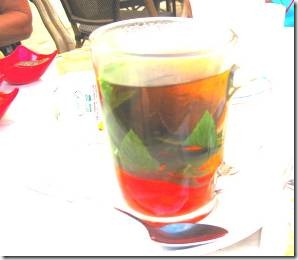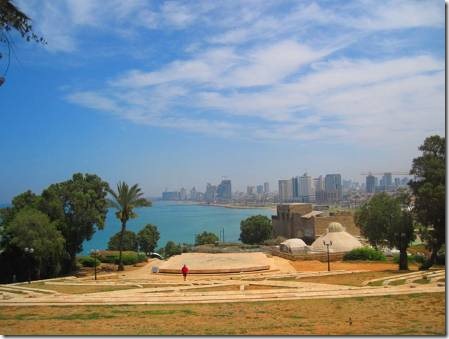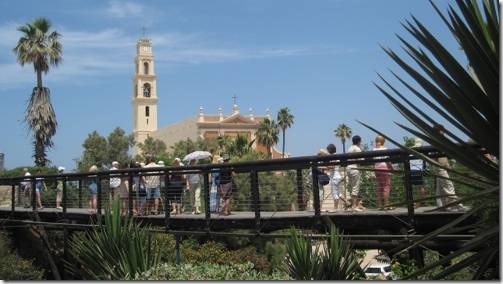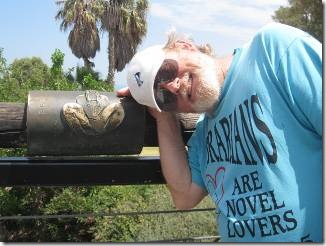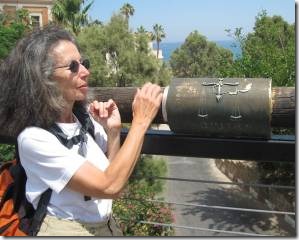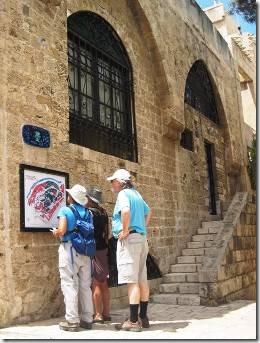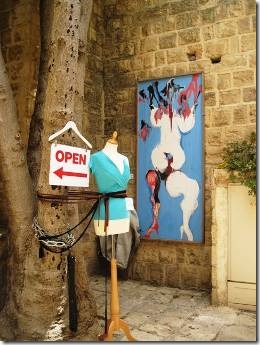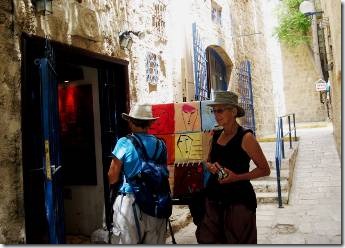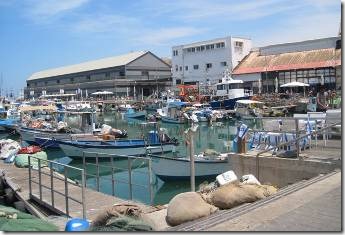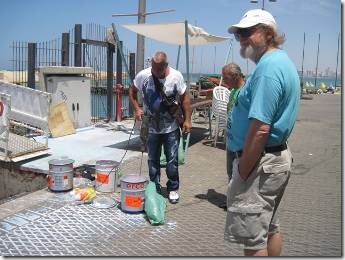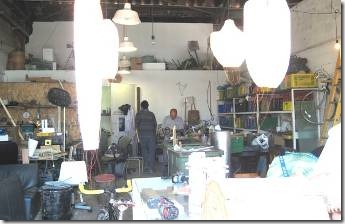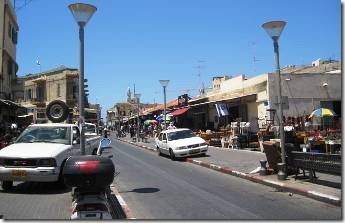Shalom,
It’s Sunday; the first day of the work week.
In Hebrew my name is Rut. There’s no th sound here. When I have to give my name in a cafe and I say Ruth, they just look at me surprised. Eve told me to say Ruthie, or Rutie because that’s the name Israelis would use. I had to do that yesterday when Randal and I ate at a McDonalds in Star Center Mall. We went there to the grocery store, the only one open on Saturday. We had planned to eat at Aroma Cafe but it was closed. The McDonalds was open. There was no English menu. Randal ordered a Big Mac and Coke Zero. I ordered a salad with chicken and water. The bill was 60.80 NIS, New Israel Shekels; almost $16 US. Seems a lot to me. Granted there was a ton of chopped cucumber and tomato in my salad and the chicken actually tasted real, but it cost 39 NIS which is about $10. The water had 00.00 next to it and the Big Mac was 11.90 NIS. The medium Coke Zero was 9 NIS. It’s about 3.85 NIS to $1 US. That’s the first and last time we’ll eat in McDonalds. At Aroma I ordered "a half " Haloumi Cheese sandwich on whole wheat ( the size almost of a whole standard piece of bread) and it was about 16 NIS. Randal had a "Breakfast for Two" of eggs, some tuna, some avocado, and some yogurt with bread, butter and jam and a huge chopped salad enough for two and that was 33 NIS. Much more food for less money at Aroma. In China McDonalds was one of the more expensive places to eat while we lived in Jingan. Actually it’s not such a bargain at home either if you get a Big Meal, which I don’t but Randal does…only occasionally. Today we’ll walk into Ashdod to our favorite doner place and have that for lunch. A Coke Zero, a Diet Sprite and a large baguette stuffed with grilled chicken cost 41 NIS. They spread humus and a bit of pepper sauce on the bread and then add the chicken which makes it taste great. You should try that. And humus is healthier than mayonnaise. We should never have started this voyage in China where a great noodle meal at the "Father and Son" food stall in the pedestrian mall cost about $1.50.
I also bought some calcium chews as I finally finished all of the good ones I’d gotten at home from our friend Carol. These have 500 mg of calcium and 400 of D. They are sort of chalky but with enough sugar to make them ok. I guess the Israelis need their medicine with sugar too. I got 120 chews which cost 100 NIS, about 22 cents per chew. Is that a good price? Should I load up? I like the gum drop ones from Carol better. Obviously not much happening here if I’m writing about calcium and eating at McDonalds
We do have our tickets for home..September 19th and returning to somewhere in Turkey November 14th. We’re not 100% sure what marina we will choose. Our tickets are from Izmir rather than Istanbul.
Tomorrow, Monday we’ll take the bus to Jerusalem for one last visit. We’ll return to Ashdod on Wednesday afternoon.
And so it goes.
Ru
I wrote this email Friday.
Ashdod June 2012
Not much happens in Ashdod during the summer. Everyone goes to the beach. Museums close for renovation. Classes for adults end, and programs for children off from school begin. Israelis go on vacation. Thank goodness for my Kindle. I’ve even been bored enough to clean half of the pilot house and the back bathroom cabinet. We did make our way to the small “light industrial” area of Ashdod looking for chemicals so Randal could pickle the water maker. No luck but Randal had some on the boat he could use. Eve and I went off to the Ashdod Museum of Philistine history and contemporary art; it was closed for renovation. But Ashdod is a great place to walk and there are lots of small neighborhoods to explore.
Yod Alef
The small shopping center in the Yod Alef neighborhood is about a mile from Doramac’s back door. Eve and I discovered it while on an evening walk. You can get almost anything you need; fruit, vegetables, cheese, yogurt, soda, oatmeal, dried cranberries, and even bacon! There is also a post office, a hair salon, a veterinarian, a health clinic and family health center. The shop keepers are friendly and helpful and the prices not so different from the Wednesday open air market. According to the map Yod Alef has 2 high schools, 2 synagogues, a community center, day care centers, kindergartens, a park, playing fields, and 3 more health clinics. Amazing to me is the lack of a library. How can you have all of that other stuff and no library?
I have a new favorite walk that takes me about 80 minutes if I don’t dawdle too much or take took many photos.
My Friday morning walk…
I leave the marina and head north along the beaches. I can either walk the beach promenade or along Sederot Moshe Dayan.
The beach promenade has lots of kitsch sculptures but they’re fun. The street promenade has more serious sculptures. I’m not sure what the sculpture, paid for by French Ashdodians, is supposed to be, but the graffiti doesn’t help.
At the intersection of Moshe Dayan and Rogozin is the Monument to the Struma and Makfura, two illegal immigrant ships.
Mafkura and Strum.
Sederot Moshe Dayan turns away from the beach so I follow along Hatay Yelet past the huge area where the Wednesday open air market is held..
In the huge parking area adjacent to the Wednesday open air market I passed a group of cyclists having some type of class.
It was Thursday so the market had vanished. On Wednesday this area is packed with stalls, shoppers, trucks, cars, buses… It’s all much easier on a motorbike or even on foot. Security inspects the trunk of every vehicle that enters the area but they just wave us in. I guess our back carrier isn’t big enough for whatever they are looking for.
I turn right off Hatay Yelet and cut through a park as I head back up to Rogozin.
A pony?
I couldn’t believe I was actually seeing a pony until I got close because it’s so out of place. I guess some lucky kid really is getting to keep it in her room as there are only apartment buildings here near the park. No barns or farms or anyplace you would keep a pony. This other woman was also taking a photo.
Beit Canada Absorption Center
"The Center is multicultural, integrating singles, families, professionals and non-professionals from all over the world including Latin America, North Africa, France, Russia, the Ukraine, Ethiopia, and Central Asian. Residents can be found mingling freely in the lobby, the library, courtyards or in the park.
A variety of levels are taught in the Hebrew Ulpan classes. There is also a language lab, a library, and a computer room with educational software for language study, which serve the immigrants in their acquisition of Hebrew skills. Classes are taught by licensed Ministry of Education instructors, and are held five hours a day, five days a week for a period of five months. As a service to residents and immigrants in the area, the Center offers special classes for engineers with an emphasis on technical terminology.
In addition to trips and seminars, Jewish and cultural programs, a strong emphasis is placed on both the cultural integration of the new immigrants, as well as their social involvement in the wider Ashdod community. Towards this end, there are joint holiday celebrations, on-going activities and special events with local artists, volunteer groups, I.D.F units and community and regional organizations. A testimony to the success of these activities is that many Beit Canada residents on leaving the Absorption Center, choose to live not only in Ashdod, but in the Beit Canada neighborhood.
There is an Information Center on the premises, offering immigrants advice and guidance on vocational opportunities, retraining options, higher education and housing etc. A Russian language community library is available for olim and local residents, and the Institute for Jewish Studies offers study and conversion options for new immigrants." http://www.jewishagency.org/JewishAgency/English/Aliyah/Absorpton+Options /Absorption+Centers/Ashdod+12-overview.htm
Absorption centers provide help for those who come to Israel to live. Those who come illegally from Sudan or Eritrea are as much of an issue as illegal aliens are in the US.
On a lighter note, or I should say "highlighter" notes…….
Small shops along Rogozin.
Once coloring your hair was something people lied about. Here women sit out in front of the salons and tell the world what they are doing. There are lots of shades of red hair you only see in Europe. We first noticed it back in 2000 in Italy. I’m only brave enough to grow my hair and let it dry curly in the breeze; not brave enough to make it some other color from the rainbow.
There are a few 7 Eleven type shops but mostly lots of small shops in neighborhoods which is really more fun. If you spend enough time here you could become fluent in Hebrew and Russian.
Saturday
Shabbat at the Marina.
About 10 am this morning a small boat pulled up across from us. Lots of pre and young teens and some adults unloaded lots of picnic supplies, pool toys, etc. Even a rubber baby pool. Randal and I were working on our dinghy which had become unglued. We had the shell and the pontoon but they weren’t stuck together. Randal was laying down some stuff like sikaflex on both pieces and then we would put them together and let it set. It was not so easy to do and with kids walking by every 2 seconds unloading stuff…… Anyway, the dinghy got glued, no problem. Eve made a sign in Hebrew that asked people not to touch the dinghy. Randal put some heavy bricks on it to press the pieces together and wrapped rope around. We also tied the whole thing to the cleat on the dock. Hopefully it will work. With all of the kids running around in the area no one bothered the dinghy. We stopped worrying about it and went off to the grocery store that stays open on Saturday. The kids were noisy and energetic and in and out of the water all day; but everyone seemed nice. Past Saturdays there has been older kids drinking and being rowdy. Some took a discarded table top from Big Boat Karina and threw it into the water to float on. A security guard came and took the board and kicked them out. Technically you’re not supposed to be in the boat area unless you have a security key. That’s true of all marinas. The people visiting this Saturday were just fine. The small kitten wasn’t so thrilled with it all and stayed hidden most of the time. It did ask for food at one point and I fed it. (It had already eating a morning meal.) About 6 pm I heard a horrible meow that sounded like it was coming Davy Jones Locker; all echo and watery. Everyone went looking. The men in the big orange dredging boat; all of the picnickers, Randal and me. We found the kitten not where it should be. It was hanging on a tire the dredging boat was using as a fender. I went to get Randal and our look wood boat hook the kitten could cling on to. Somehow before Randal got there the kitten ended up in the water. And then just quiet. Randal and I were afraid that she had drowned. But then there she was swimming towards Eve’s dock. When she swam close enough to one of the boats near Eve’s a man grabbed her by the tail and flung her onto the dock! Whew. Everyone was smiling and happy…just because of one tiny kitten. Nice people. Russians I guess because it sounded like they were speaking Russian and not Hebrew. The kids could speak some English. Now it’s quiet. Hopefully it will stay that way. Big boat Karina played music way too loud, way too late last night.
Randal at the helm plotting our next passage…back to somewhere in Turkey where we will spend the winter.

